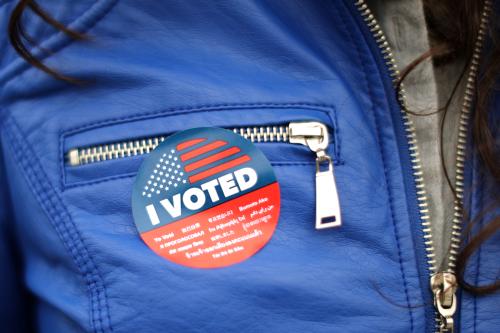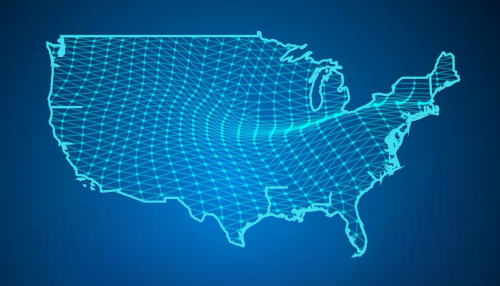Each time new details emerge about the U.S. government’s family separation policy at the border, I find myself compelled to remind people that the horrific removal of children from their homes by U.S. government officials is not, in fact, a new phenomenon. Until the Civil War, the states and federal government enforced laws which allowed children to be sold during the slavery era. In more recent times, well-meaning (or not so well-meaning) state officials, religious organizations and adoption agencies removed American Indian children from their homes and families on tribal reservations. As recently as a generation ago, at least one-third of American Indian children were removed from their households (Mannes, 1995).
It is difficult to overstate the amount of disruption and harm that this scale of child removal can have on a community or a family. These removals often became permanent over time, causing deep and wide-spread wounds. As Nicole Adams from Partnership for Native Children says, “Every Native family has suffered some deep intergenerational trauma from pre-ICWA days. We have lost loved ones.”
Now, it appears that the courts are re-opening the question of how and when American Indian children can be removed from their families. If this happens, family separation won’t just be a problem at our southern border and anyone who hopes to avoid repeating America’s past sins should pay attention.
It is difficult to overstate the amount of disruption and harm that this scale of child removal can have on a community or a family.
In 1978, Congress passed the Indian Child Welfare Act (ICWA) to stop this often unjustified taking of children, no matter the rationale. (Child removal was sometimes based in moral, religious, or child welfare concerns, but often there was little to no rationale at all). Specifically, ICWA provided that tribal governments, as sovereign entities, could make decisions about the placement of children. Previously, it had been a patchwork of agencies with overlapping or conflicting jurisdictions. The passage of ICWA made it explicit that tribal courts, not state governments, retained the authority to place their children—who are tribal citizens—in adoptive or foster homes. (Renick, 2018)
For the past 40 years, ICWA has been an important piece of legislation that has allowed tribes to regain a measure of self-governance and a re-establishment of their authority. Keeping children in the community has meant reduced trauma and harm for these children, as they were able to maintain contacts with some family members and other relatives. Additionally, cultural connections were also facilitated by being in their home communities. Research by the Casey Family Foundation has found for 2008-2009 that children who went through a Child Protective Services investigation had an 86 percent return rate to biological parents 18 months later—a rate that is comparable to non-Indian children (Maher et al, 2015). As prior research has shown, prior to ICWA, the return rate would have been much lower for American Indian children.
A recent ruling, however, in the U.S. District Court for the Northern District of Texas has the potential to change these hard-earned gains. The judge in the Brackeen v. Zinke case, ruled that ICWA is unconstitutional in its entirety based on the Equal Protection Clause and the 14th Amendment. The judge wrote that ICWA’s racial classification of children has not been shown to serve a “compelling governmental interest”. This ruling ignores the unique political status of American Indians and Alaska Natives (AIAN), however. Tribal governments are not race-based and their authority and sovereignty pre-exists the United States. This ruling will be challenged in courts for years to come.
My research has failed to uncover a single example of how removing control, jurisdiction, or authority from tribal governments improves outcomes for the AIAN population. While tribal governments are not perfect by any means, it cannot be shown with any credibility that removal of tribal government authority has improved outcomes for the American Indian population – not in policing, governance, education policy, environmental protection, or civil jurisdiction – and certainly not for child welfare.
In fact, researchers have shown that tribal governments and communities subject to state civil and criminal jurisdictions have experienced an increase in crime and a reduction in incomes (Dimitrova-Grajzl et al, 2014). When education policy was concentrated at the federal-level and child removals were common in the Indian Boarding school era, the impact on children was disastrous. Numerous studies have documented the abuse, deprivation and death that has resulted. In a related setting, Feir (2016) has shown, in Canada, that their Boarding school experience resulted in less First Nations people speaking their own language as adults, more living away from their home communities, and less participation in traditional ceremonies. In my own work, I have found that tribal governments that are able to fully exercise their own authority over their jurisdiction and citizens are the most able to innovate and find unique economic opportunities. Tribal governments are able to move more swiftly to respond to their own local needs, circumstances and cultural and social ties better than state or federal governments. I have found evidence for this in land tenure and property rights, constitutional adoption and long-run economic development.
If this happens, family separation won’t just be a problem at our southern border and anyone who hopes to avoid repeating America’s past sins should pay attention.
In more recent work, I have found, along with other colleagues, the dramatic improvements in child outcomes that result from improved economic conditions on American Indian reservations. We have found long-run increases in educational attainment, reduction in criminality and improved social skills when these children resided in higher income homes on reservation.
These improvements in economic conditions can be directly attributed to improvements in tribal government authority and control of their resources and expansion into new economic niches. Whether it be gaming, natural resource conservation and ecosystem restoration, or the direct administration of federal programs on reservations, the largest successes have come from the exercise of tribal sovereignty and self-governance.
The recent ruling in the U.S. District Court for the Northern District of Texas is a big step backwards for American Indians, Alaska Natives and potentially other indigenous peoples in the U.S. Recent decades have witnessed some of the most important gains for these populations. Finding that ICWA is unconstitutional misses the fact that the AIAN population is a political designation not a race-based designation. Additionally, subjugating tribal governments and programs to state authority is not welfare-enhancing at all; there is no empirical evidence to show that states provide for better outcomes for tribal citizens. The Indian Child Welfare Act in this regard serves a very compelling governmental interest.
References
Dimitrova-Grajzl, Valentina and Peter Grajzl and A. Joseph Guse. 2014. Jurisdiction, Crime and Development: The Impact of Public Law 280 in Indian Country. Law & Society Review, Volume 48, Issue 1, pages 127–160.
Feir, D. 2016. “The Long Term Effects of Forcible Assimilation Policy: The Case of Indian Boarding Schools.” Canadian Journal of Economics/Revue canadienne d’economique 49(2):433–80.
Maher, Erin J. and Melissa Clyde, and Adam Darnell, John Landsverk and Jinjin Zhang, “Placement patterns of American Indian children involved with child welfare: Findings from the second National Survey of Child and Adolescent” August 2015. Casey Family Programs Report.
Mannes, M. (1995). Factors and events leading to the passage of the Indian Child Welfare Act. Child Welfare, 74(1), 264–282.
The Nation’s First Family Separation Policy, October 9, 2018 Christie Renick, The Chronicle of Social Change. https://chronicleofsocialchange.org/child-welfare-2/nations-first-family-separation-policy-indian-child-welfare-act/32431






Commentary
40 years ago we stopped the practice of separating American Indian families. Let’s not reverse course.
October 11, 2018